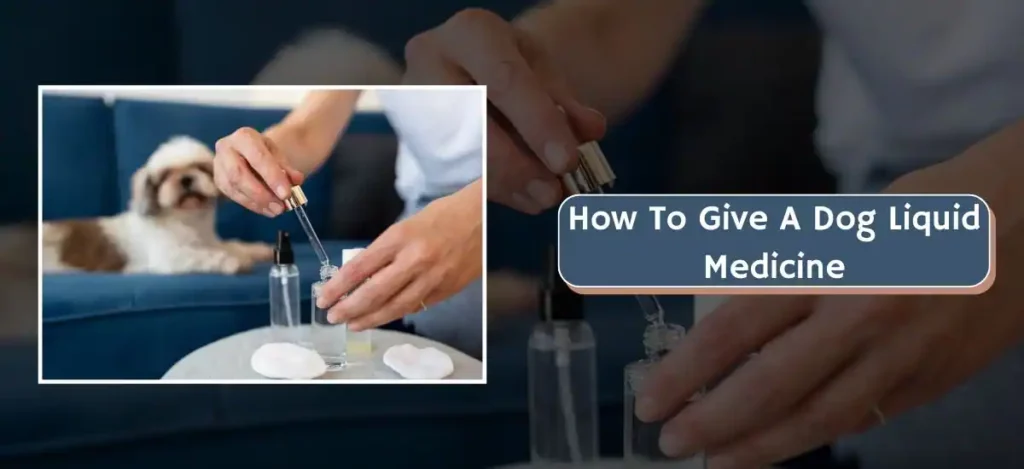Giving liquid medicine to your dog might seem tricky, especially if they’re not excited about the taste. But don’t worry, it’s a skill you can master with a little patience and the right techniques. Ensuring your furry friend receives their medication correctly is essential for their health and well-being. So, let’s simplify the process and make it a stress-free experience for both of you!
Understanding Your Dog’s Medication
Getting the medication details right is the first step to success. Here’s what you need to keep an eye on:
- Type of Medication: Know what you’re giving your dog. Is it an antibiotic, a pain reliever, or maybe a dietary supplement? Each type serves a different purpose.
- Dosage and Schedule: Accuracy is crucial. Verify the amount of medicine you need to administer and how often you need to give it. Always follow the vet’s instructions to avoid any risks of under or overdosing.
- Storage Instructions: Proper storage is key to keeping the medicine effective. Some need to be in the fridge, while others should be kept in a cool, dry place away from sunlight.
Preparing to Administer Liquid Medicine
A smooth administration starts with good preparation. Here’s a checklist to help you set everything up:
- Medication Ready: Shake the bottle if needed to mix the medicine well before measuring the dose.
- Syringe or Dropper: These tools are crucial for giving liquid medicine. Make sure they’re clean and the right size for the medicine dose you need to give.
- Treats: Keep some of your dog’s favorite snacks handy. Giving them a treat right after taking their medicine can make the experience more positive for them.
- Towel or Blanket: This can be handy for wrapping your dog gently if they’re small or tend to squirm. It helps to keep them calm and still during the process.
Techniques for Administering Liquid Medicine
Now that you’re prepared, let’s walk through the steps to ensure your dog gets their medicine without any fuss:
- Positioning: Calmly hold your dog in a comfortable position. If you have a small dog, consider placing them in your lap. For larger dogs, you might need them to sit upright next to you.
- Introducing the Syringe: Gently open your dog’s mouth by lifting the upper lip and inserting the syringe tip into the side of the mouth, between the cheek and the teeth. This reduces the risk of spilling or your dog spitting out the medicine.
- Administering the Medicine: Slowly depress the syringe plunger to release the medicine. Allow your dog to swallow it gradually. Never squirt the medicine too quickly as it can cause choking.
- Comfort and Reassure: Throughout the process, speak softly and reassure your dog with gentle strokes. This helps keep them calm and makes the experience less stressful.
Alternative Methods If Direct Administration Is Challenging
Sometimes, direct administration might not go as planned. If your dog is particularly resistant, here are some alternative methods:
- Mixing Medicine with Food: This can be effective if the medication does not have a strong taste or smell. Mix the medicine with a small amount of your dog’s favorite wet food or a special treat they can’t resist. Ensure they eat all of it to get the full dose.
- Using Pill Pockets: If the liquid medication can be administered in smaller doses or drops, pill pockets might work. These are tasty treats with a space to hide the medicine inside, making it easier for your dog to ingest without noticing.
Common Mistakes to Avoid
To ensure your dog’s safety and the effectiveness of the treatment, be mindful of these common pitfalls:
- Skipping Doses: Missing a dose can hinder your dog’s recovery. Set reminders if needed to keep track of the medication schedule.
- Incorrect Dosage: Always use the measuring device provided with the medication to avoid giving too little or too much.
- Forcing the Medicine: Avoid being too forceful when administering medication as it can stress your dog and make future administrations more difficult.
Aftercare and Monitoring
After administering the medicine, the next crucial step is to keep an eye on your dog:
- Observation: Watch your dog for a few minutes after giving the medication to ensure they don’t vomit or show any signs of distress.
- Reactions to Watch For: Look out for any unusual symptoms such as excessive drooling, hives, or difficulty breathing, which could indicate an allergic reaction. Contact your vet immediately if you notice these signs.
- Positive Reinforcement: Show some extra love and perhaps another treat. This positive reinforcement can make future medicine times easier as your dog will associate the experience with rewards.
Frequently Asked Questions
Q1. What if my dog spits out the medicine?
Ans: Re-administer a partial dose if possible, but avoid double dosing without consulting your vet.
Q2. Can I mix the medicine with water instead of food?
Ans: This depends on the medication’s formulation and should be discussed with your vet.
Q3. How can I make my dog more comfortable with medication time?
Ans: Gradual conditioning with treats and positive reinforcement can build positive associations.
Conclusion
Administering liquid medicine to your dog doesn’t have to be a struggle. With the right preparation, techniques, and a bit of patience, you can ensure that your dog gets the treatment they need with minimal stress for both of you. Always follow your veterinarian’s instructions and don’t hesitate to reach out to them with concerns about your dog’s health or behavior during medication times.

